Atomic MOTION SKINTEC XSTIFF skis are now available. Atomic Pro Classic cross-country skis Atomic sport classic skis
The extended warranty for shoes starts from the date of purchase and lasts exactly 1 year.
In the event of a warranty claim, an exchange for a new pair of shoes is possible during the entire warranty period (within 1 year from the date of purchase).
Refunds are only possible within 30 days from the date of purchase or in the absence of a similar shoe model in size and price.
Refunds for goods of inadequate quality or exchange for similar shoes are made upon written request from the buyer. The application must be accompanied by a sales receipt (bill of lading) issued upon purchase. In the SportExtreme sports salon, an internal check of the quality of the goods is carried out. The inspection period is from 7 to 14 working days from the date of receipt of the buyer’s written application. Based on the results of the inspection, the Buyer is provided with a Footwear Quality Inspection Certificate. In case of disagreement with the results of the internal quality control, the Buyer has the right to contact an independent expert to obtain an independent assessment. If an independent examination finds the quality of the goods to be inadequate, within 10 (ten) business days from the date of provision of documents confirming the results of the independent examination, the Buyer is paid the cost of the goods, and the costs of the examination are also compensated (subject to the provision of supporting documents).
Requirements for shoes used during the warranty period:
- - shoes must be clean and dry;
- - shoes that have been repaired are not accepted for return
Shoes not subject to exchange:
- - with defects resulting from operation in conditions that do not correspond to its intended purpose;
- - with mechanical damage (burns, cuts, abrasions, etc.);
- - deformed as a result of improper wearing, drying, lost quality as a result of chemical exposure and with other defects caused by the buyer;
- - repaired by the buyer before presentation to the store (except for replacing heels, attaching metal jambs, gluing a preventive outsole, if such repairs did not result in the formation of defects).
Returning goods of proper quality
The buyer has the right to exchange and return the goods in the store at the place of purchase within 14 (fourteen) days (not counting the day of purchase). According to Article 25 of the Federal Law “On the Protection of Consumer Rights”, the buyer has the right to exchange a non-food product of proper quality from the seller from whom this product was purchased, if the specified product does not fit in size, style, model, fullness or color for another or similar one. An exchange of a non-food product of proper quality is carried out if the specified product has not been used, its consumer properties, presentation, seals, factory labels, as well as a cash register or sales receipt (delivery note) issued to the buyer along with the specified product sold are preserved. When exchanging or returning goods, the buyer must have with him an identification document, a cash receipt and a sales receipt (invoice).
How are asphalt skis made? All normal people buy new good ones, and transfer the old ones to the “asphalt” section - for training on poor surfaces, where it’s a shame to spoil the good ones. For me it's the other way around. There is no money for new good ones, I bought new “asphalt” ones. My answer to the crisis.
I didn’t have any particular doubts - I took Atomic Pro Classic.
I've been wanting to try them for a long time. The skis are popular, inexpensive and, from the outside looking in, perform well.
The color is bright, they look like fire in the snow!

I took the size 188 cm. Geometry 45-45-45.
I pass according to the stated weight. Please note - the wide edging on the sides is clearly visible in this photo.
For my height of 170 cm, of course, the skis are a little short. But I’ll be less likely to get stuck in the bushes on the ski tracks in the Moscow region.
The heels are strengthened in this way.
The structure upon purchase is shown like this. It's already a little damaged, but it's still visible.
Please note - Atomic Pro Classic skis without notches. It is necessary to use holding ointments! On the side faces of Atomic Pro Classic there are recommended markings for applying holding ointments.
The core, as in the Atomic Pro skates, is Ultrahigh Densolite.
The weighing result pleased me. Weight of Atomic Pro Classic skis with Fisher R3 Classic bindings. One ski is 750 gr, the other is 780 gr. The difference in weights no longer surprises me. Before that, I dealt with Atomic Pro Skate - they also had different weights (820 and 840).
But what surprised me was that the classic Atomics Pro turned out to be lighter than the skate ones. Although it is in the skate that the weight of the ski is very significant for me personally.
When installing the bindings, the Atomic Pro Classic skis surprised me for the second time. The balance points of the skis turned out to be in slightly different places. But no problem. I don’t want to run competitions with them. I have others for this.
I tried them in frosty weather. After the purchase, I applied cold paraffin according to the temperature. During the training sessions to practice classic walking techniques on flat terrain, they performed well. Although it’s difficult for me to evaluate skis in such conditions.
Finally got out into the forest with the Atomics. That's what they were bought for. It’s a pity to take good skis to the wilds of the Moscow region. Distance - 50 km. Average temperature -20. In the morning I didn’t get into the ointment, I applied a warmer one. For the first half of the journey, the skis were terribly slow. I really regretted buying them, longingly remembering my Salomon Equipe 10 Classic. To catch up with your comrades, you just had to run after them down the hills.
At lunchtime I found out that there was sand stuck under the block. This morning I crossed a path sprinkled with sand in my skis - the skis are asphalt, it’s not a pity. When I removed all this disgrace, the skis went very well.
Second experience. It's cold again. Temperature -20. Rogaine competition. The holding ointment is green swix, the glide is good, I liked it. For comparison, my partner was on Rossignol Zymax Classic, for some reason they slid much worse (maybe it was the ointment).
I tried it with a plus. Temperature +1+2, Paraffin - yellow swix - CH10. Excellent glide!
The skis are stable and quite nimble. What else do you need? Atomic Pro Classic skis are good for asphalt and rolling skis. They will also provide a lot of pleasant moments for amateur athletes.
In the top skate skiing Atomic Redster S9 Carbon uses 2 designs:
- Yellow (UNI)– universal design
- Red (Plus)– design for warm conditions and soft wet snow, transparent surface without graphite
Skate skates Atomic Redster S9 come only with universal yellow design.
IN classic Atomic Redster Carbon uses 3 designs:
- Blue (Cold)– under cold conditions and hard ointments. Low deflection height (HBW) – from 0.8 to 1.1 mm
- Yellow (UNI)– universal design for solid and semi-solid ointments. Average deflection height (HBW) – from 1.0 to 1.3 mm
- Red (Plus)– design for warm conditions and liquid ointments. High arch deflection (HBW) – from 1.3 to 1.7 mm
The height of the deflection is the same as what is called “rigidity of the ends”, this does not change the meaning. The rigidity of the socks affects the height of the deflection. The higher the deflection, the higher the block rises above the ski track during rolling. Therefore, liquid ointments require a high arch so as not to interfere with sliding.
Base plastic Atomic
- Bl 1000(not available on Atomic skis since 2018) – entry-level low-molecular plastic. Universal in terms of use, contains 3.5% graphite. Almost does not absorb paraffin. The simplest quick-application lubricants will do.
- BI 1500– entry-level low-molecular plastic. Universal in terms of use, contains 5% graphite.
- Bl 2000– universal plastic with medium molecular weight. Contains 9% graphite. Can be treated with simple paraffins to improve performance.
- BI 3000– universal high-molecular plastic with 13% graphite. It “accepts” lubricant well; treatment with paraffins significantly improves glide.
- BI 4000– a universal surface of a professional level. Contains 20% graphite. Excellent compatibility with all types of racing lubricants.
- BI 5000– World Cup level base. Contains 25% graphite. Comparable to Salomon G5.
- BI 5000 S.A.– improved version of Bl 5000, contains 25% graphite and 6% special additive. Atomik does not disclose its composition.
- BI 5000 C.B.– transparent plastic for difficult conditions (artificial snow, dirty, watery, coarse-grained). Fits on Red skis. Does not contain graphite.
- BI 6000 – new Atomic base for the 2019-2020 season. Fits on Redster S9 Carbon, C9 Carbon, C9 Carbon Skintec. According to the manufacturers, it contains 10% “special additive” to improve gliding.
Atomic structures
If the skis do not have a special sticker with a structure mark, then one of the standard ones is applied:
- Blue structure - structure code M10, t from -3 and colder
- The yellow design is the same M10, t from -3 and colder
- Red structure – structure code M11, t from -4 and warmer
Available pre-order ski structures:
- AC 5– cold structure. Works well in Russia. Optimal conditions: -8 -30. Interestingly, Salomon recommends the same structure for -8 -20. Therefore, conditionally, it is -8 or colder.
- AM 7– universal structure with a slight minus. Works optimally from -12 to -4.
- AM 6– structure at -1 -8. Works great on coarse snow after a thaw.
- AW 7– warm structure at -5 +5. Suitable for coarse spring snow. Works well in late spring in Russia. Salomon recommends the same structure for 0 -2.
Atomik officially declares only such structures. But Atomic and Salomon are produced in the same factory and the structures are applied in Altenmarkt (letter A in the code - Altenmarkt, W - warm, C - cold, M - medium), which means the structures are common with
Serial number of Atomic skis: decoding
Number 7316 6661
- 7 - year of production (2017)
- 316 - serial number of the day of production from the beginning of the year
- 6661 - pair number
- Uni – universal design (like Salomon’s Yellow), m/h – medium/hard hardness
- 75 - 95+ - recommended skier weight for this pair in kg
Stiffness measurements for Atomic skis

- In the center with a weight sign, the force in kilograms is written, which is fixed for each ski length - SLF. On skis with individual selection, an additional sticker is indicated in the upper right corner.
- SLF(Ski length factor) – a certain force that is fixed for each ski length. It is necessary to obtain the FT indicator. The load is applied 8 cm below the balance point.
All measurements are indicated on the ski sticker with additional measurements:
- L1- length of the block in cm from the center of the ski forward after applying force SLF
- L2- length of the block in cm from the center of the ski back after applying the force SLF
- L3- distance from the highest point of the block to the balance point of the ski with force in SLF
- VSP- height of the block at the balance point without applying force
- F.T.(Final tension) - the same H3 and HBW - pad height in mm at the highest point after applying force in SLF
- M.F.- load that must be applied 8 cm below the balance point to compress the pad to 0.2 mm

Please note that Salomon claims a point of 7 cm, Atomic – 8 cm, Fischer – 7 cm. There are discrepancies in the sources, in one place they write 8 cm, in another 7 cm. In practice, this is not so important. People ski, not robots; everyone has a different kick, a different load distribution on the foot, etc. Approximately 7-8 cm - this information is quite enough.
Technologies and structure of Atomic skis
SDS (Short Distance Step) technology – special inserts in the grip area on classic skis. According to the manufacturers, it slightly raises the block area, which prevents the holding ointment from braking during the sliding phase. At the same time, the overall stiffness of the skis is maintained.
What layers does the ski consist of?
- Base (slipper)
- Laminate layers
- Core
- Again several layers of laminate
- Cap

Cross-section of Atomic ski cores
Nomex with SDS. The lightest core, installed on top models. The photo shows Atomic WorldCup Classic skis with SDS technology (a layer between sliding plastic and a honeycomb structure).

Nomex. The lightest core, installed on top models.

Densolite And Nomex. The photo shows a cross-section of Atomic Race skis. These days they are no longer produced, but the structure and content of the skis have not changed. Presumably this is now an Atomic S7.

Densolite and Nomex
Densolite. There are densolite of different densities: 1000, 2000 and 3000. The higher the number, the more porous and lightweight the material. Used in Atomic S5 and below.

Characteristics of racing and sports skis Atomic 2019-2020 in tables
Atomic Redster S9 Carbon, Redster S9, Redster S7, Redster S5 and Redster Skintec racing skis
The classic line now includes a racing model with the Redster C9 Carbon Skintec casing. Including a platform for the new Prolink Shift movable mounts. Now Atomic and Salomon have added a necessary feature to skinned skis - the ability to move the Prolink bindings. To do this, a Prolink Shift Plate is installed in the standard holes, which allows you to move the fasteners by 5 positions.
The entire Carbon ski series is now available with the new BI 6000 base, which we wrote about above.
Skate skis Atomic Pro S1 and S2, combined Pro CS1
Skis marked “L” are a women’s series with a different design and sizes.

Classic skis Atomic Pro Skintec and Pro C2

Junior skis Atomic redster junior

Selection of Atomic cross-country skis by weight
Racing classic Atomic skis are selected using the Your ski sticker - a simple and clear way to choose skis without memorizing complex indicators.
Based on the color of the square in the graph, we determine the design of the skis (yellow, red, blue). The Y axis is the weight, the X axis is the height of the pad. According to the sticker, the skis are suitable for 72-94 kg (the entire length of the Y axis). We look at the FT (HBW) indicator. At 90 kg the skis will press down to 0.8 mm, at 80 kg - up to 1.1 mm. The larger the gap, the greater the force required to close the pad and the less the holding ointment will slow down during the rolling phase. This pair is suitable for an amateur weighing 85-90 kg and a trained athlete weighing 80-85 kg.

Sticker Atomic Your Ski
For a more accurate selection skating skis Atomic recommends using the FT indicator. For example, skis with a weight range of 75-95 kg with FT 2.4 are suitable for 75 kg, and with FT 3.0 - for 95 kg. Do not forget that these are conditional indicators. The selection of skis largely depends on the athlete’s level of training and the type of track.




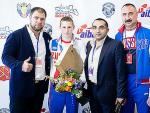

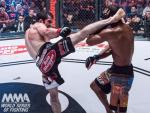
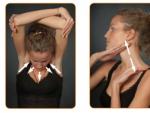
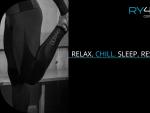
 Cyclones and anticyclones Flettner's wind ship
Cyclones and anticyclones Flettner's wind ship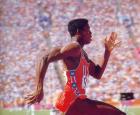 Fastest man in the world
Fastest man in the world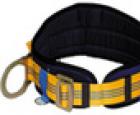 Descenders for industrial mountaineering Unicender - created by the Anglo-American company Morgan&Thompson
Descenders for industrial mountaineering Unicender - created by the Anglo-American company Morgan&Thompson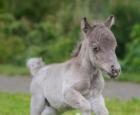 Possibly the smallest horse in the world was born in the Leningrad region Gulliver sets a record
Possibly the smallest horse in the world was born in the Leningrad region Gulliver sets a record